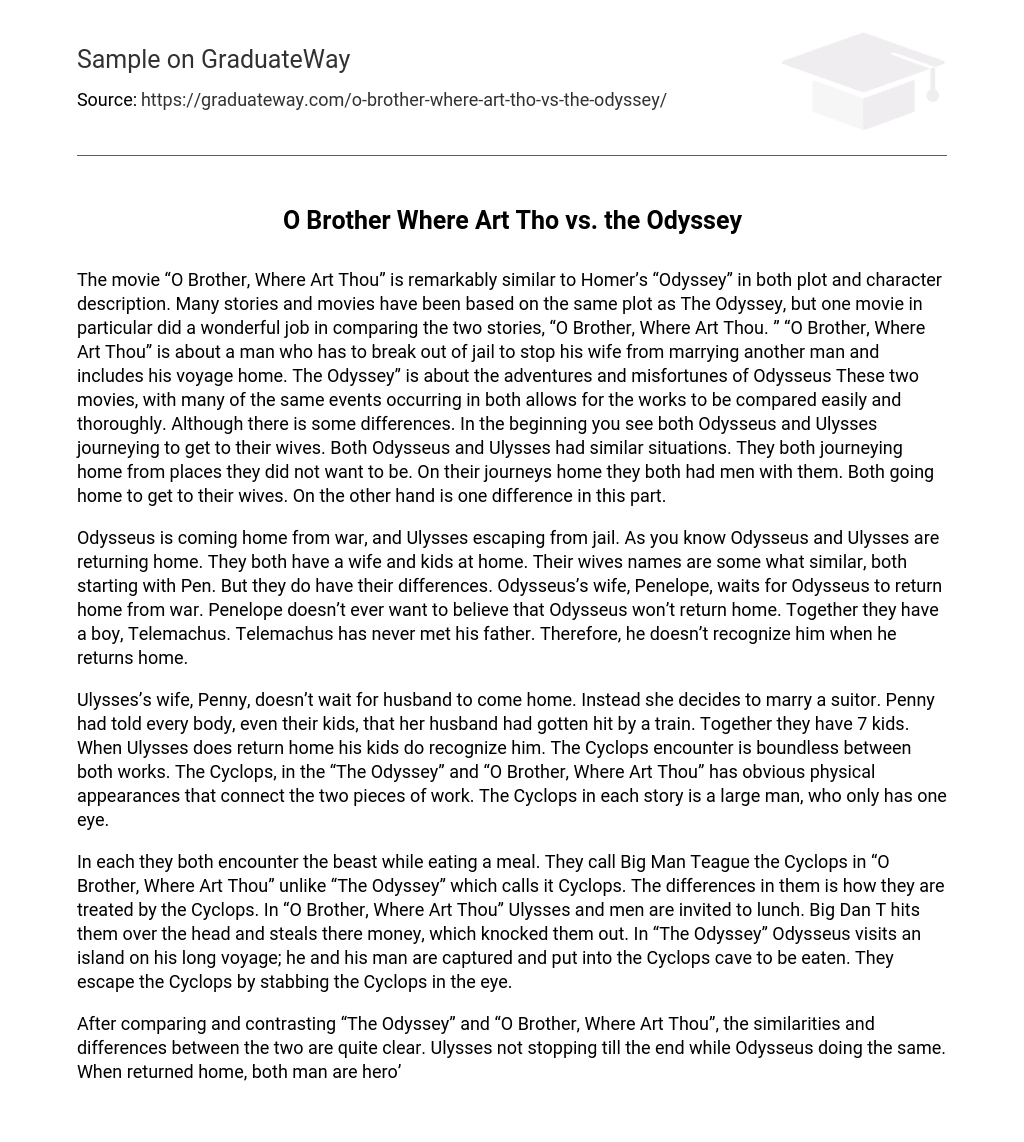The movie “O Brother, Where Art Thou” and Homer’s “Odyssey” have remarkable similarities in plot and character description. While many stories and movies are based on The Odyssey’s plot, “O Brother, Where Art Thou” distinguishes itself with its wonderful comparison of the two tales. In this film, a man must escape from jail to prevent his wife from marrying another man, which mirrors the journey back home in The Odyssey. Both stories depict the adventures and misfortunes faced by their respective protagonists. Despite some differences – such as Odysseus and Ulysses’ initial journeys towards their wives being depicted differently – both characters find themselves journeying homeward with male companions they did not wish to accompany them. Ultimately, their goal is to reunite with their wives.
Both Odysseus and Ulysses are making their way back home. Odysseus is returning from war, while Ulysses is coming back from jail. Both men have families waiting for them, including a wife and children. Interestingly, both wives have names that start with “Pen,” but they each possess their own distinct qualities. Penelope, the wife of Odysseus, eagerly awaits his return from war and firmly believes he will come back. They share a son named Telemachus who has never met his father before. Consequently, when Odysseus finally returns home, Telemachus fails to recognize him.
Penny, instead of waiting for her husband Ulysses to return home, decides to marry a suitor and tells everyone, including their children, that Ulysses was hit by a train. They have 7 children together. Eventually, Ulysses does come back home but his children do not immediately recognize him. The theme of encountering the Cyclops is present in both “The Odyssey” and “O Brother, Where Art Thou”. In each story, the Cyclops is described as a physically imposing man with only one eye.
Both “O Brother, Where Art Thou” and “The Odyssey” depict encounters with a beast during a meal. In the film adaptation of “O Brother, Where Art Thou,” the beast is known as Big Man Teague or Cyclops. However, in “The Odyssey,” it is simply referred to as Cyclops. The main difference lies in how the Cyclops treats the characters. In “O Brother, Where Art Thou,” Ulysses and his men are invited for lunch but are attacked by Big Dan T who steals their money and leaves them unconscious. Conversely, in “The Odyssey,” Odysseus and his men visit an island on their long voyage where they are captured and taken to the Cyclops’ cave with intentions of being eaten. Nevertheless, they manage to escape by blinding the Cyclops through stabbing its eye.
When comparing “The Odyssey” and “O Brother, Where Art Thou”, it becomes evident that there are notable similarities and differences between the two stories. Both Ulysses and Odysseus persistently pursue their goals until they achieve the desired outcome they seek. Additionally, upon returning home, both men are celebrated as heroes for successfully completing their journeys. They manage to safely reunite with their families while undergoing personal growth throughout their respective adventures. Moreover, they embark on a new chapter of life alongside loved ones, earning admiration and love from those around them. Despite finding fulfillment in different areas of life, they still strive to win over their true love. Ultimately, this is how all heroes aspire to be depicted.





